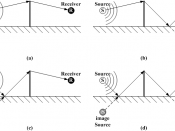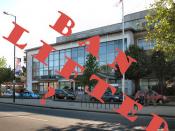An organization, by definition, is "a collection of people working together to achieve a common purpose" (Schermerhorn, Hunt, & Osborn, 2005, p. 6). That can take the form of a corporation, a faith-based group, or even the military. It does not, however, mean the entity is functioning well. The dysfunction of groups of people working together has led to the need for a body of work and a discipline called organizational development (OD). OD looks at organizational behavior and attempts to find ways to help groups of people achieve their collective organizational goals. As you can see from the definition above, organizational behavior encompasses a wide range of topics, such as human behavior, change, leadership, teams, etc. The major theories of organizational behavior (OB) can help are: Communication, diversity, Business Ethics and Change Management.
The most critical component of any organizations success is its ability to communicate. Communication, both internally and externally, is the key to establish, conveying and achieving strategic goals in every area of operations.
People can relate to each other only through some form of communication. The survival of the organization depends on the individuals and groups who are able to maintain effective relationships. If the organizational communications can be understood, the organization itself will also be understood. Communications can be defined as "a process by which information is exchanged between individuals through a common system of symbols, signs, or behavior" (Communication, 2009). The purpose of communication may range from completing a specific task or mission, to creating and maintaining satisfying relationships.
Many global businesses, including most of the major brands that the public use, can be seen not to think too highly of good business ethics. Many major brands have been fined millions for breaking ethical business laws. Money is the major deciding factor.
Organizational change management includes the processes and tools for managing the people side of the change at an organizational level. These tools include a structured approach that can be used to effectively to transition individuals, groups and the organizations through tough changes. When combined with an understanding of individual change management, these tools provide a framework for managing the people side of change.
If you start by recognizing the ways in which you are similar to your coworkers, you'll build a base of understanding and acceptance that will withstand the sometimes stormy times when your differences come to the forefront.
Reference:Communication. (2009). In Merriam-Webster Online Dictionary. Retrieved May 25, 2009, from http://www.merriam-webster.com/dictionary/communicationSchermerhorn, J. R., Hunt, J. G., & Osborn, R. N. (2005). Organizational behavior. Hoboken, NJ: John Wiley & Sons, Inc.


